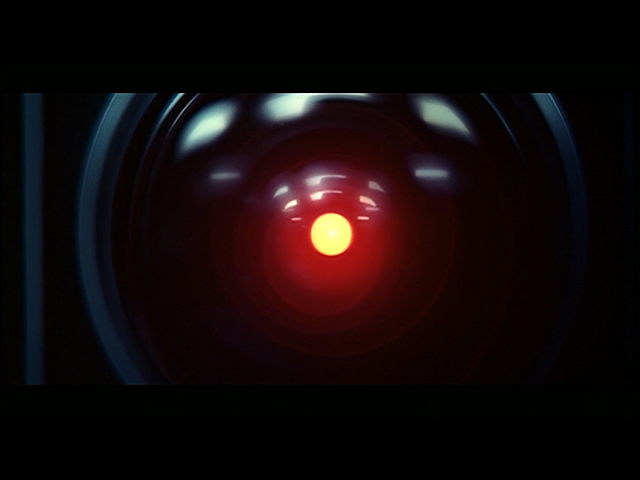This is excellent recycling of the cringe original
What’s the original?
deleted by creator
What? Really? But as a cartoon how does that even work if it’s not ironic? … He asked rhetorically, knowing the right wing humor is basically just incoherent hate.
It makes more sense as well
I have had to spend so much more time thinking about drivers on Windows than on Linux it’s not even funny
And what are Nvidia users supposed to do?
I have never had problems with Nvidia drivers on Linux mint detects them and ask if you want to install the official drivers
LMDE didn’t install the DKMS modules on my kid’s PC, so the nVidia drivers never loaded after a new kernel got installed. I do enough tech support at work so we chucked Pop!_OS on the PC (and set it up with btrfs and timeshift-autosnap) instead. No more problems.
May not be a problem with mainline Mint, of course, but there are weirdos like me who prefer the Debian edition.
Don’t be ashamed of using Debian!
Far from it, Debian is one of my favorites, though I run EndeavourOS on my main machine.
It’s Linux Mint Debian Edition that’s the oddball, but in a good way.
That’s untill you switch to Wayland and realize just how shotty Nvidia’s support can be.
They’re supposed to buy an AMD card, obviously. /s
I wish AMD had a competitive 4090 alternative
Use POP OS which has NVIDIA Drivers in the iso
Or Nobara which has a dedicated Nvidia install tool in its welcome screen
Unfortunately it has weird issues with my bog standard Intel HP Omen laptop and a 2060 GPU.
Basically any kind of sleep mode kills the GPU. I have go into Display settings and force a re-detect to wake it. Kind of a pain when you use the laptop connected to an external monitor with the lid closed.
…to let the distro pick the best driver for you? That’s what I do at least.
I’m starting to wonder if this is a meme or if people are actually having problems.
deleted by creator
Less about problems and more about performance/features in games. How much of a hassle is it to get dlss, ray tracing etc running? How’s the performance impact from not properly supported drivers.
It depends on your distro
Suffer. It’s ok I’m used to suffering for graphics cards. Thanks bitcoin!
press two buttons after install
cry because no Wayland
I have spent very little time worrying about drivers on either.
On windows geforce came preinstalled and I just updated it occasionally when something didn’t work
On NixOS I add one line to my config file and it handles Nvidia drivers for me and updates with the rest of my packages
Meanwhile, Windows in 2023: “oh, you plugged the same flash drive into a different USB port? Better reinstall a new set of drivers!”
"Let me search for a solution
…
…
…
No solution found"
Has the annoying “search for a solution” window ever found a solution?
Yes for stupid stuff like turning off the network device, to cut access to the internet. Windows finds by itself that the network device is disconnected and reconnects it by itself. Granted it’s not much, but it’s as complicated to find that menu than to run that utility.
Has the annoying “search for a solution” window ever found a solution?
Actually yes. In W7, at least, anytime sound wasn’t doing what it should have the “search for solution” button would fix it right up. The first time it gave and performed a solution and worked I was dumbfounded.
2003*
Never had my PC (win10: 2016-2022 and win11: 2023-now) install a driver for a USB stick ever.
Even some external devices are painless.
And I see plenty of PCs in my job.Edit: Win7 on the other hand…
I still have it from time to time that Windows has to install a driver for something benign like a thumb drive. Not always, though. And yes, the driver is fixed to the physical port. Using a different port reinstalls the same driver again.
Experienced this exact behavior on Windows Vista, Windows 7, Windows 8, Windows 10 and Windows 11.
I once was fixing someones computer booting with Bluescreen, because Windows 7 thought it found newer drivers for USB 3.1, and those newer were causing BSOD
I see it regularly with Win10, and I also see plenty of PCs in my job.
I’ve seen this so often on Windows Vista, and I’ve never seen it on Windows 10.
Granted, I’ve switched USBs in the meantime, so maybe it’s just the USB?
How do you recognize a Linux user?
You don’t. They’ll tell you at the first opportunity.
I am a vegan, Linux, unsexual. Thanks for asking.
You forgot that you were using arch, btw.
You should get into crossfit. Or ultramarathons.
So many Lemmy users are going to feel personally attacked seeing this lol
I don’t feel attacked just confused
Drivers are included in the Kernel on linux.
Windows on the other hand… let’s just say it can’t handle printers very well
Printers in general are the devil regardless of OS.
Nah, my HP P2035 is working great for 7 years straight. I just plug the USB into any Linux or Windows PC, or even through a dongle into my Android phone, I press “Print”, and the thing just prints!
From what I’ve heard, it seems most laser printers are awesome. And get yourself a Brother, is what people say on the Internet.
If there exists a hell, especially built for IT, it’s filled with printers.
nVidia has entered the chat
Yeah I was very confused. Only thing one needs to install nowadays is mesa and the correct Vulkan loader
I’ve just been using Windows for work stuff now and then for over two decades now - so I just have the install scripted so I can just deploy it from scratch whenever I need it, and throw it away afterwards. Before we had multicore CPUs making emulation not annoying I had a sun workstation with a SunPCI card for that.
The one constant over all windows versions is it running into some driver issues for stupid reasons. Now with 11 its the signed drivers - and while you can do exceptions for development I never got unsigned graphics drivers to work.
Also, Windows on ARM is horrible - something as simple as a usb serial adapter doesn’t work because there just are no ARM drivers.
Go to hp website and download crapware thats gonna search for drivers for you. Make sure to install symantics bullshit, amd catalyst bullshit, hp battery bullshit and other useless crap too.
Meanwhile linux boots to a perfectly running computer first time with no icons in the tray.
You forgot whan the upgrade of the drivers and bloatware goes wrong on windows… What a great experience of “simplicity”
It seems like alottaaaaaa people on lemmy specifically haven’t used windows in the past several years. Built in AV is pretty much king on windows. Almost all drivers auto install even Nvidia albeit not the latest nvidia sometimes. Ten has built in battery options. You’re speaking about prebuilts and trying to spin the narrative. Windows 10 is a great OS, it’s hilarious how people attempt to pretend it’s not.
I installed Windows (both 10 & 11) last month on separate occasions, it took nearly 45m for it to install (with both 10 & 11), on top of that Windows 11 fucked up the first time around & I had to do it again. All to just update the BIOS because HP sucks.
When a Linux distro like Linux Mint installs in 5m-10m flat on the same exact device, first time around ever time.
Linux doesn’t need AV software, “security by design” is a key principle of Linux, and I don’t even think Windows itself actually “needs” AV software. It’s called common sense.
Automatically installing drivers won’t work if your WiFi card is unsupported out of the box like others have mentioned, especially with Windows 11 where you need internet to even install it the official “Microsoft way”. While Linux has all such supported drivers built-in and can provide support for these devices long past their EOL on Windows.
Nvidia drivers will auto install on Linux distros such as Mint too.Windows 10 is a great OS, it’s hilarious how people attempt to pretend it’s not.
Nobody said it wasn’t, his comment comes off more as shitting on HP than Windows; we just don’t ignore it’s downside when looking at the whole picture.
Also Windows 11 is arguably worse than Windows 10.Each OS has pros & cons and it’s important to look at each closely without assuming someone else is in fairyland because they chose a different OS then you, if you’re not careful you may find yourself in the very fairyland you’re accusing others of being in.
“I hate searching for drivers”
???
Of all the Linux nitpicks, you chose the one wrong answer.
Linux is way better with automatically installing drivers than Windows. Unless you’re using Nvidia, it’s literally in the kernel.
Linux has the issue of lacking in enterprise media software like Microsoft Office and Adobe Products. The former of which has long since become a non-issue. Adobe however persists. And some games will never run so long as the devs hold them hostage on anti-proton anticheat varients.
And most people use Nvidia. Don’t act like it’s a small number.
Lmao. “Unless you’re in the majority of PC gamers then it’s not a problem” Linux users I swear
“Or if you need to use Adobe products”
Pretty much every distro offers an easy way to install nvidia drivers.
It’s the peripherals that really need drivers. I remember having to install digimend drivers for my friend’s graphics tablet for example. That said, it wasn’t supported well on Windows either and performed better on my Linux setup than on Windows once I did find out about the digimend drivers.
Driver troubles for peripherals aren’t uncommon in Windows either. Don’t get me started on printers. Somehow, printers and scanners have always been plug and play for me on Linux, contrary to what I often hear.
I run Nvida and Linux pretty regularly. It takes an extra step, but if you aren’t using a card at, basically, release it should be fine. 🤷♂️
apt install nvidia-driver
pacman -S nvidia
Most gamers use nvidia.
The average person uses integrated intel or amd graphics.
They didn’t imply that little people were using Nvidia GPUs, he is referring to the fact that you do like…2 extra clicks or so to install Nvidia’s drivers? You don’t even need to open a web browser!
I don’t agree. I had lots of issues with printers, scanners, cameras, fingerprintreader, styluses. Yes, regular hardware, no issue, peripherals? Different story.
I know this is an issue from the manufacturers, but it’s still an issue.
Also WiFi
What are you even talking about? Hardware issues in Linux are neverending, not just Nvidia. How’s your HDR support going? DRM support? Can you plug multiple monitors and have different DPI settings on them yet? Got AptX LL? Let’s be real - fuck all works on Linux.
I have a 4k laptop display and use it alongside 2 1080 monitors just fine nowadays, Wayland handles that no problem
AFAIK HDR support still sucks though
Well, that’s good to know!
Not sure whether this is sarcasm or not
HDR support is almost finished, raytracing is pretty much rolled out, certain drm works such as Netflix.
There is Aptx HD support, but I believe they’re reverse engineering I’m sure Aptx LL will come eventually (or Qualcomm makes it easy). I have a friend that uses Aptx/ldac but I haven’t bothered myself.
It seems the only things that don’t work are tied to stereotypical anticompetitive companies refusing to support. Which is a shame because it’s capable of exceeding the other platforms in ease of use.
You see, the problem is that support is coming. But by the time it comes, we have 10 new technologies, which are not supported yet. Linux is useless.
To be fair. AptX in general is niche and proprietary. That fact that regular AptX and LDAC can be enabled with one command is awesome considering they’re proprietary.
Generally, if anything is a standard it’s added much more quickly than other platforms so I wouldn’t call it useless. It’s a shame because Linux really has the best Bluetooth stack. It just works.
I’m hopeful SBC-XQ gains traction, even if I prefer an uncompressed stream, at least we have a better A2DP standard. Linux already supports this so it’s ahead of the game.
Now now, saying its useless is a hair strong. It works wonderfully for servers. As a work station it can be a bit of a mess keeping perfect pairity with each new, sprawling branch of tech and standards. Especially when it’s in a blind spot most people find convienent (looking at you webapps).
It may not work for you, and what’s the harm in having more options for the consumers!
However, the evangelizing I don’t understand.
Widevine DRM works in both Chrome/Chromium and Firefox. HDR Support is nearly done. Yes, we can have different DPI/Scaling per monitor thanks to Wayland.
Go get some up-to-date information.
Adobe Photoshop is the only tool in Adobe’s suite that Linux can’t compete with. Inkscape is on par with Illustrator. Krita for whatever Adobes’s drawing tool is named. There are several proprietary or FOSS alternatives for Premiere Pro. It’s just GIMP that has a poor UI.
Inkscape is not on par.
Maybe for now, but as soon as more people switch to Windows 11 or Microsoft apps that constantly show you ads and are basically spam / adware themselves, Linux will get more appealing.
Microsoft is unfortunately learning from social media companies. Not only do you PAY for the product, you are also the product, and get your personal info stolen and get served ads even while you pay.
It’s getting to the point where I’m seriously eyeballing Mint again, or Kubuntu. And I’m the kind of person that’s generally too lazy to even dual boot anymore.
Sorry for the uncalled advice, but you might want to avoid Ubuntu. Canonical (the company behind Ubuntu) is being rather obnoxious pushing for a technology called “snaps” that has a bunch of issues, among them performance.
Mint is fine. In fact I’m distro-hopping from Ubuntu to Mint again.
I don’t Mint the uncalled, ty.
Just do it. I used Windows mainly out of apathy for years. But once I made the switch, I never looked back. Mint is easy to use and doesn’t get in the way. And there’s zero shitfuckery going on.
Might sound stupid, but I want to be apathetic about my OS. I mainly game and I have been using Windows since I was 8. I know it in and out and if I am not forced to (or if ads really get that crazy), I am not gonna switch. It’s just nothing I am remotely passionate about.
How big on gaming are you?
So far, I find Mint massively less frustrating to use than Windows. It feels faster, too.
Windows is so full of bullshittery, it’s not even funny.
Exactly! This sentiment is why I ditched Windows in the first place. That and the combination of unnecessary annoyances that slow my workflow in which the majority of Windows users seem to be desensitized too.
Linux already works for my use case, so why would I want to voluntarily deal Microsoft’s anti-consumer practices? I don’t.Linux seriously needs to figure out laptop battery life. Not much chance of going mainstream when installing it means a 50% drop in your battery life. Until then, I’ll use Linux on my desktop and just disable all the adware spam shit in Windows on my laptop.
That’s the job of the manufacturer. Check out system76, framework and tuxedo laptops
I have not had this issue with three or four laptops running Linux over the years. Power management turned off somehow maybe?
I installed Linux on my old main laptop and battery life went up by like 2 hours lol. You might want to look into battery life solutions like tlp.
Ah yes, windows where I have to somehow figure out how to install the drivers for my network adapter before I can actually connect to the internet, on top of having to go to a different website for each device that needs a driver to find the correct one, download it and install it.
Vs Linux, where network (and most essential) drivers are baked into the kernel, and all other drivers (for peripherals, etc) can be had via a package manager, where you can often find free and open source solutions. Also, video drivers are automatically installed with the OS (provided you are using a distro with a proper graphical installer for ease of use, cough use Endeavour cough), and automatically updated when the system is updated.
Sounds like you clearly haven’t used Windows in over a decade, or even close to two.
I haven’t had to install a network driver since Windows XP. Even then it had drivers for most cards built in.
I haven’t tried to use Linux for desktop in a while, probably as long as they haven’t used windows. Because in my mind what they said is 100% backwards.
Seems like both have matured quite a bit
You’re right about the network drivers, but on things like serial drivers, Windows is a fucking nightmare. Hell, I can’t use some devices because FTDI drivers will brick the device if it decides its a knockoff of their chip. Getting anything working that isn’t consumer grade is a shit show.
Serial drivers? Are we talking rs232? (Checks what tf ftdi is)
Ah yes. We really are talking about very old school stuff. It brings back memories.
This week I learned we have a waterslide connected through rs232 to a pi in our network. How’s that for a IOT discovery. Working for a medium sized municipality really shows you all the bonkers solutions (and implementations) out there. If you can think a IT horror up, chances are good somebody really has created it and is using it commercially.
Back to your issue, which is more a Ftdi issue then a windows issue since they themselves create the crashing drivers. And I can see how an old school serial port, connected to a modern pc can result in all kinds of havoc when done wrong.
I see FTDI also have usb to rs232 solutions. That should work… Mostly. (as long as the solution doesn’t go looking for an irq or other horror from the past.)
I’m really getting curious for what use case you’re still using rs232. Most network gear these days is perfectly managed without it.
USB to serial converters are what use these drivers and they’re used all day long for IOT stuff
And Windows update takes care of 99.9% of missing drivers automatically.
Make that 2 decades I gather. Maybe even 3. This sounds like nt4 territory. Maybe barelu6 win2k.
I was a windows user up until about a year and a half ago, and had this issue as recently as Windows 10. I had to use my phone as a tether to go download the drivers for my TP-Link Archer T6E. Also had the issue with my MSI z97m Gaming where I had to go find drivers for the built-in wired network adapter, again using my phone as a tether, on Windows 8.1
Since drivers are so specifc, people’s anecdotal experiences with having to install them is never going to be shared.
IE, I had to install a wired NIC driver just last month on a fresh Windows 10 22H2 for a Dell laptop that was no more than a few years old.
When I last installed Windows I had to google where do download Libreoffice, Firefox, Steam, Audacity, VLC, Gimp and a lot more software.
On Linux most came preinstalled, the rest was one click in the Repository (“Store” for Generation Smartphone)
When I last installed Windows I had to google where do download […] On Linux most came preinstalled
You can’t have it both ways.
On one day, you complain about all the so called “bloatware” that’s preinstalled on Windows (more “pre-linked” and easily installed, and these “links” are easily deleted).
The next day, you complain that the specific subset of software you want to use is not preinstalled on Windows.
Lastly, the way you go about finding where to get your software, that’s more of a philosophical question. Do I want someone else to curate a list of available software, or do I want to visit the publisher’s website and get it directly from the source?
At least on Debian/Ubuntu I can use tasksel to select a useful preset of packages right while installing. Base is just a text mode shell with minimal command line tools, Server has some Network Stuff, LXQT, Gnome and so on… for the total N00b it is fine to default to KDE or Gnome, I prefer LXQT though. And tbh, I think Firefox, Libreoffice and VLC are useful preinstall in nearly every use case while the usual stuff on Windows is pretty useless (Another Antivirus? Really? A trial version of a paint programm inferior to Gimp 1.0? Office 365?)
while the usual stuff on Windows is pretty useless
“useless” or “useful” to you. That’s my point. Someone who does not have any use for Libreoffice will get just as annoyed as you would get with a pre-linked Office-Suite.
Just use winget in PowerShell.
That’s a “terminal” for generation typewriter.
Chocolatey, winget
All that stuff they listed is packaged, versioned, and handled. I’m pretty sure there’s gui’s too, if you’re into that
For chocolatey, maybe. I haven’t seen a Winget GUI yet.
Microsoft really should do that, but I think the “but what about our App Store numbers” guys would rather that didn’t happen. I don’t believe that anybody outside of people who were already otherwise Linux users has touched winget.
This doesn’t happen in windows anymore. Over 95% of all drivers auto install.
Yeah the last time I had to install drivers for a network card on Windows was over a decade ago
I had to install a network adapter driver the other day. Had to use my wife’s computer to download into a flash drive and bring it over to my computer with zero network connectivity.
Granted, this only happened because my network card was broken.
In my old tech bin there’s a bag of usb WiFi dongles and a thumb drive with all the drivers.
I work in a Win-centric PC shop. USB dongle (WiFi or Ethernet adapter) is by far the best way. Virtually all drivers download automatically with rare exceptions (specifically GPU drivers or weird import components).
I just installed Windows on my daughter’s new [to her] computer last night and this did not happen. Don’t get me wrong, I loathe Windows, but c’mon.
Yeah I’ve installed Windows about ten times in the last ten years for various people and I’ve never encountered any of this. It is as close to flawless as I can ask for.
I had the ethernet in my desktop mobo not work when I tried upgrading to win11. Worked fine in 10 but no internet on 11.
I also had a very difficult time getting a Xbox wireless controller adapter working on win 10 without spending about 2 hours searching.
Windows usually works but sometimes it just fucking doesn’t. Linux isn’t perfect either but I usually don’t have issues with my Ethernet ports not working.
I think hiccups are going to be inevitable at times no matter what you’re using, but I don’t expect total disaster to befall you either, no matter what you’re using. I will admit that I was miffed as hell when that TPM bullshit came up when I was installing Win11 last night but a quick download of Rufus and a bootable USB installation cleared that up right quick.
What kind of weird or shitty NIC you’re using that needs a specific driver for Windows?
Lenovo IdeaPad Pro 5 Gen 8 Notebook comes with a MEDIATEK MT7922. Windows 11 does not want to install unless you circumvent the requirement for Internet or supply it with a manually downloaded driver.
Linux? Just works.
TP-Link Archer T6E, one of the most popular on the market
The wireless kind, presumably. Those always need their own firmware and therefore their own driver.
I tend to have driver issues more so with Linux than windows in my experience. Both seem to be capable at the very least of automatically installing a lot of the drivers without user intervention.
You’d have more driver issues with Windows if you used hardware that wasn’t already being sold with Windows pre-installed by OEMs/system integrators. Comparatively Linux supports a wider verity of hardware for much longer, Windows on the other hand only really supports consumer grade hardware that’s likely to have it pre-installed anyway with a limited (and often predestined) EOL.
If manufacturers treated Linux desktop as first class like with Windows or Linux on Servers then there’d be a very small amount of unsupported & likely obsolete hardware.
I’m not sure how any of the different hardware components I bought to build my system had Windows pre-installed, considering I had to install Windows myself.
Sir, do you know what OEMs/system integrators mean?
You’re very likely using hardware components OEMs/system integrators use in their consumer products (in fact I’d bet on it), in which incentivizes hardware manufacturers to write & maintain proper Windows drivers for said components, because of money and contracts; that is until the hardware goes EOL and the development and maintenance ceases to continue from that point.That’s where Linux is different; it may not be able to support all consumer hardware from day one (if at all in some cases; tho this is getting better with time), since all the (in-tree) drivers are open source there isn’t a true EOL and the driver can receive proper maintenance, improvements, security patches, etc. long after the support has gone EOL on Windows.
This very thing is why Linux is so good at reviving hardware that Windows doesn’t or can’t support anymore.In fact Linux probably officially supports more consumer grade hardware then Windows 11 specifically because of the TPM tomfoolery that blocks hardware from installing it in the Microsoft approved fashion (even though the hardware is easily supported through unofficial means).
My system is one I custom built myself. I don’t really think I’ve ever owned an OEM desktop before. The driver issues I tend to have was with multiple USB WiFi adapters I’ve tried with my computer. I had to do some really weird black magic shit to get them to work properly. I also couldn’t run my TV at 4K 60hz on Linux, but I could on Windows. Freesync has also given me issues when trying to activate it. Not the fault of Linux if manufacturers don’t give it proper support, but this has been my experience unfortunately. Windows would indeed have more driver issues if less drivers were being officially supported like if any other OS didn’t get proper driver support, so I’m not really sure what you’re trying to point out to me. What exactly is “consumer grade hardware”? Doesn’t Windows run on other things as well besides just your typical desktop?
The driver issues I tend to have was with multiple USB WiFi adapters I’ve tried with my computer.
I just use WiFi tethering which circumvents that whole thing, so I can’t speak on that.
I also couldn’t run my TV at 4K 60hz on Linux, but I could on Windows.
This could be a few things, from the drivers to your display output configuration. I have a 4K 60hz TV that works perfectly fine with Linux, the display output just wasn’t configured correctly. This is something Wayland can indirectly streamline for us in the very near future as it adds features that allows developers to better handle & support various displays.
Freesync has also given me issues when trying to activate it.
This is unfortunately an area that’s all up to one entity (AMD) to sort out but they just haven’t. The way they’d achieve this is straight forward on paper; they’d have to make a FreeSync standard driver and provide similar GUI tools.
don’t really think I’ve ever owned an OEM desktop before.
That doesn’t mean you’re not using the components found in common OEM pre-builds.
Doesn’t Windows run on other things as well besides just your typical desktop?
Not really, no.
There’s Windows server but it’s woefully unused and is basically dead. Why even use it when Microsoft Azure (Linux based) exists. Amongst the security issues raised by various cyber security professionals.
Additionally the driver problem is flipped in this area; I could grab just about any server hardware and it’ll likely work with Linux no problem. However with Windows, I’d have to look specifically for Windows compatible hardware, as there’s just not much insensitive to support Windows in the server space.
You can find Windows XP running on random legacy crap. But as of modern Windows, a Microsoft Surface and Valves Steam Deck is about as unique/exotic as the hardware gets.
Windows just isn’t flexible enough to be used outside of the desktop in any real compacity and Valves Steam Deck is great example of this. The Steam Deck may have the drivers to support Windows but navigating it is a whole different story.
I’ve only ever had to search for NIC drivers on Linux.
Windows usually packages most drivers into the update process automatically and the device manager page can find whatever drivers you need for whatever hardware it can detect.
When I first tried Windows XP, I had to figure out how to install storage drivers in order to install the OS.
And back at that time if you installed any flavor of Linux you were lucky if the OS install didn’t fuck itself over, also God help you find drivers, assuming that they even existed. At least xp would function.
As of windows 10, windows will always function on pretty much any hardware out of the box. Some obscure Chinese WiFi dongles might have some issues, but main board drivers are always right there.
Linux users have this weird echo chamber where they seem to think that Linux just works. It can but it’s a 50/50 chance that it won’t and you’ll spend hours troubleshooting. Also os updates on Linux have a high probability of borking the entire os.
Windows, for all of it’s many many faults, generally does “just work”. It might not be perfect, but it will function.
And back at that time if you installed any flavor of Linux you were lucky if the OS install didn’t fuck itself over
I was using Linux religiously back then, and this is false. As long as there’s a driver for all of your hardware, it generally worked fine.
But that “as long as” is doing some heavy lifting. The usual suspects were pretty much the same as now: Broadcom, NeoMagic, and NVIDIA. Some cheap printers and modems were problematic as well, but if you paid for good hardware, it would probably work.
And that’s the rub. You have to very specifically choose your hardware for Linux. Or at least you had to back then. It’s not quite so bad now, but back then it was a real showstopper. Especially broadcom. That caused me no end of issues back in the day.
If you want to have some fun install Windows 10 on a hard drive. Disk usage will go to 100%. It doesn’t do this on SSDs except maybe very rarely. I’m pretty sure this is not a bug, but intentional so that people will buy a new PC. Windows 7 will run flawlessly on the same hardware. Although Linux is starting to demand higher hardware specs than it deserves.
Do you realize WINXP is TWENTY FOUR years old now???
I do now. Was blissfully unaware of that particular milestone in making my feel my years until you mentioned it, however.
Pop!_OS is incredible as well! Definitely my favorite Linux distro.
The Rust based Cosmic DE is looking awesome.
I can’t wait to try it when it releases.Wow I didn’t know about this!
I had a similar situation with my ryzen 1600 motherboard, except it was the sound card. Everytime windows updated it would dump the driver I installed and try another one that was broken. I had to keep my sound drivers on the desktop so I could reinstall them. This occurred even after I reinstalled windows 10 on a different ssd.
Nowadays it’s more of a fight against the update-provided drivers though.
Missed opportunity to say “for tux sake”
Ohh, the agony…
Am sorry, but what? Who searches for drivers on Linux? I’ve been a user for decades now and searching is either don’t buy shit hardware or just do apt search.
Windows on the other hand is literally looking on support sites to find latest version.
Am sorry, but what? Who searches for drivers on Linux? I’ve been a user for decades now
The last time I gave Linux a serious go on the desktop, I had an ISA Sound Blaster card that supported PnP. Under Windows, it was automatically detected and would at least play sound out of the box, without installing any additional drivers and had a few special features that you had to install SB drivers to make work. Under Linux, in order to get any sound at all, I had to dig around online to find out that you needed to download a driver package, install it, then run a tool from a shell that would generate a config file for the driver with every configuration the card might possibly have, then manually edit that config to tell it which config you actually had, then restart the driver and then you’d get actual sound out of it.
I don’t doubt it’s drastically improved since then, but it’s always made me a bit gunshy about trying it again.
How long ago was this exactly?
ISA cards? That’s not even comparable. That’s 90s era, 30 years ago, 20 at best. Things have changed.
Nobody. It either works out of the box or you’re out of luck. Windows has worse problems, actually. Try using hardware from 2000 and earlier from manufacturers who are out of business. Chances are, it will just work right away linux, but on windows, even if you manage to find the drivers, they are most likely built for 32-bit XP or something and won’t ever work on modern versions.
How do you even search for drivers in Linux? I thought this was a windows only thing
You need to if your device isn’t officially supported. This is pretty common for USB wifi cards.
There’s a DB of officially supported cards , and if your card isn’t there then you have to look up for a driver.
Usually they’re fairly easy to find with just googling.
On Arch they’re usually right in the AUR. I imagine there’s people adding them to the new AUR-like Debian repo which name I can’t remember rn.
On one side it is a rare sight to need to install a driver for Linux. I had an Star NL24-10 printer with an IEEE-488 connector for the C64.
INSANE! Linux natively supports C64 peripherals.
I build a simple adaptor from Parallel to IEEE-488-Serial and when I told CUPS the printer was on /dev/ieee488 it immediately found it. Insane. Oh, the Floppy was also available, at least at sector Level though there actually is no C1541 Filesystem so I had to open it in Starcommander, some sort of Norton/Midnite-Commander, which officially supports those images.
The amount of supported hardware is INSANE. You will get stuff working which works nowhere else.
The coolest shit are Host-Based Storage Systems, with the most known group as Memory-Technology-Devices. For example there are SMR-Harddisks where I can change the SMR-Layout from my computer. I can say “50% capacity CMR, 50% SMR”. Or Host-Based-QLC-Drives where you can select for each MinWriteCell how to use it: As ultra-Fast SLC/MLC, as the middle TLC or as the superslow QLC. Sure, it costs Capacity. But the choice ist yours. I bought a Data-Center-Intel-QLC-Drive and converted it to 50% MLC at 3.5GByte/s sustained and 50% QLC with 0.5Gbyte/s. Sure, it reduced the capacity of the 4TByte Drive to 3TByte. But who cares if it is so fast it blows anything away. On Windows you can not even detect those drives.
But: If you have a really bad case of “unsupported hardware” then things get complicated fast.
Unsupported hardware is a really big issue when you encounter it. I used a WiFi driver for a broadcom USB Wi-Fi card and it was one of the worst experiences I’ve had. Constant disconnections. Sometimes it wouldn’t even connect. Learned a lot about systemd, network manager, services but really was painful because I used that computer for work.
What do you use to manage SSD/HDD management like that? I just reinstalled Arch and would love to mess with this.
Beware: Those MTD-Stuff does NOT work with consumer stuff. Highend-MTD is practically not existing for consumers because Windows doesn’t support them anyway.
If you check the Linux Kernel Frontend you’ll find a section about “MTD devices”. There are some userspace programs listed for managing the kernel components. Those tools are somewhat good for Host Based SMR hard drives but you might need tools to unlock the drives which I didn’t need because they got unlocked at work. Those HDs are only sold to data centers. The two I have at home are from work and it is a miracle they let me have them at all.
Flash based MTD though is sometimes available but not in normal computing. Because SATA, NVMe, eMMC are actually “to advanced” for that stuff. MTD is VERY Low-Level. The driver does everything, buffering, moving from MLC to QLC, refreshing cells and so on. For me it is a PCIE-Card with absolutely no intelligence but a very fat driver. But you might also find it in old Linux/Android-Based phones, Netbooks and Tablets though current smart phones use “smarter” storage like eMMC. Iphones have MTD but you can not get Linux to run on them.
Very interesting, thanks for the info. I may have to piece together an ebay server to mess around with some of it.
Good Luck. I haven’t seen those drive ANYWHERE outside Amazon and Microsoft backend Systems. Technically speaking they weren’t even from “Servers” but from “SAN” systems.
If it’s not in the Kernel, write a driver and upstream it. Be a man.
Easier said than done. I did want to look into writing wifi drivers but imo these are the most difficult drivers to write code for.
Facts, they can be a huge pain due to manufacturers not providing proper documentation; essentially forcing you to reverse engine the driver from scratch.
It’s not only that but wifi protocols are very complicated and if you look up datasheets you’ll likely just find documents in chinese.
Yeah, because companies like Realtek & Mediatek are Taiwanese/Chinese.
Ofc
And this is a clear example of how to keep people away from Linux, nothing push more people out of a community than shamming.
On ubuntu-based distros, you can use driver manager.
I’ve been using Linux for almost 20 years, and I can’t remember the last time I had to stress over drivers. Of course, I always check Linux compatibility when I buy hardware.
Same here. In the early days, driver compatibility was an issue, but it never prevented me from actually daily driving Linux.
I’m embarrassed to say I’m a SE and don’t know anything about Linux. What makes it worth using over windows?
First: Linux is the street racing scene of the PC world. You can customize everything, and it’s going to be faster and more responsive. Also if someone just wants to build a really cool custom experience, there’s very cool stuff possibld do on Windows, but that road eventually leads to Linux.
Second: Linux is the long haul huge truck engine of the Internet. Big data processing only runs on Linux*. I’ve met one Windows supercomputer and one Mac supercomputer. Both are long retired now.
*The interesting exception to this is payments processing, which has a lot of Windows and Mainframe still. But while that workload is big, it’s dwarfed by the Internet backbone and supercomputer jobs that run on Linux.
Something like 99.9% of the Internet now runs on Linux.**
**Please no one reply to me about your .Net shop. I’ve worked at them too, but they’re a substantial minority now, and they still mostly deploy to Azure which is mostly running Linux.
Third: Free stuff. Most open source software is written for Linux, and only ported to Windows after it gets really popular. So on Linux, your options for good free software are much nicer.
I work in a .net shop. It is a hair painful, to say the least, and I’m constantly looking over the fence longingly. They exist, are the minority, and are a fucking nightmare by comparison.
As a software engineer, the nicest thing is that the whole programming ecosystem integrates with Linux. Git, SSH, Docker, you get natively in your OS. Even dumb shit like file path separators, line-endings, file permissions. Most programming languages make the assumption that you’re on a UNIX system (Linux, macOS, BSD).
Aside from that, Linux is fucking awesome as an SE, because everything is open-source. Find a bug in a program you use? You can fix it, if you want. Want to learn how a specific program works? Just look at the source code. Or its config file. Or its logs. Everything wants to teach you about itself.
And personally, I also just love the usability. The built-in file manager, terminal, PDF viewer etc. are good. The built-in text editor is no IDE, but it’s up-to-snuff with Notepad++.
And I’m making these blanket statements despite there not being one built-in anything. You can choose between multiple GUI bundles (so-called “desktop environments”). From a minimal DIY setup (i3wm etc.) all the way to maximally feature-rich goodness (KDE). You don’t have to use the same limited setup as your granny uses to launch a browser. You can customize everything to your needs and you get tons of power-user features.Linux by itself is just a kernel, there’s a whole range of operating systems using it. Most of them have some commonalities, but there are also huge differences. Most of them can run directly from a USB stick (or in a VM obviously), so you can try some out.
Some things that basically all of them do very well, compared to windows:
-
mainly open source components (± some proprietary drivers and apps, if you want)
-
no ads in the OS
-
support for very old hardware, being (depending on actual OS more or less) light and resource efficient
-
very good package management
-
customizability
There are many things that are specific to some OSes. I switched from Windows 10 years ago, and I can’t see myself going back. Everytime I have to use it somewhere, I get annoyed quickly.
There are some drawbacks:
-
software has to be built against a specific kernel, and some proprietary software is not offered for linux. There are compatability layers for running windows software on linux without emulation, but they are mainly optimized for games (I’ve had windows-only games run faster on linux than on windows!).
-
some drivers are unavailable for linux, as the device manufacturers have to cooperate somewhat. However, almost everything will work.
-
some drivers are available, but require binary blobs distributed by the manufacturer. The proprierary NVidia drivers, for example, are faster than the open source reimplementation noveau, but they can cause problems with some software like sway. If you have an AMD gpu, their open source drivers are great, so no problems.
Roughly all the servers (including Microsofts own cloud), half the mobile systems, lots of the larger embedded stuff and some small percentage of deksktop systems are using Linux. Again, just try something (maybe Pop!_OS or Mint) and see if you like it.
-
I have never even thought about drivers let alone search for them in Linux. Everything just works out of the box.
The only exception was when I wanted to try a different version of an NVIDIA driver. Ironically the one that worked best was the one that came with Ubuntu and was installed by clicking a checkbox to use proprietary drivers over open source
I couldn’t get Bluetooth to work reliably. Never thought something as simple as a Bluetooth headset would give me such problems.
Bluetooth is anything but simple. It’s a hackjob upon hackjob of hackjobs. While it’s true that linux implementation is also a bit of a hack, I remember the constant headache I had when all my peripherals were on bluetooth, and the pain of switching them all between windows PC and android phone. Never again, I’ll take the wires instead, thanks
Yeah, you gotta look for Bluetooth receivers that have proper support. Some laptop receivers won’t work correctly - its only a select few receivers that actually have reliable drivers.
I myself use a Xbox one x|s controller wirelessly using the xpadneo driver. My first issue was the fact that the first USB Bluetooth receiver I bought didn’t work - turns out that certain Bluetooth receiver models you can buy from eBay/Amazon are often bootlegs of other models, and these bootlegs are just different enough that you have to modify the kernel to adjust for the quirks.
Given that USB Bluetooth receivers are cheap, (was like $20 Aussie dollars) I just bought another one and that one actually did work, instead of working out how to modify the driver.
Then I found that Xbox one controllers have this weird quirk due to the BTLE authentication system it has that results in it unable to stay permanently connected - it would constantly loop between connected and disconnected, at first I tried every method for getting it to work, and the only one that worked was that I had to attach my USB receiver to a windows VM, pair it, go into the windows registry to grab the auth key, and then implant it in the Linux Bluetooth configuration. Only then did it work flawlessly.
Problem is it’s a lot of fucking effort for a layman to attempt to work out and setup. And you also have to have either a windows machine, or a windows VM to connect the receiver you plan to use with the controller into.
But once you do it, the controller will always work on the PC, with that receiver. And you never need to worry about it untill you decide to reinstall linux- but in that case you just copy the same key across Linux installs.
Note: I don’t dual boot, but sometimes the dual boot method is the only way to get things to work Here’s the archwiki article I used to work out how to do it, only I used a windows VM instead of a second windows partition.
https://wiki.archlinux.org/title/bluetooth
Here’s a list of good and bad dongles from the xpadneo Bluetooth page:
Huh, for me bluetooth headsets are the one kind of peripheral that work better on Linux than windows.
It mostly works out of the box. Go ahead and search for a few laptop models on arch wiki and you will discover that quite a few of them have features that need manual fixing (regardless of distro) and in some cases is unfixable.
You must have the absolute most common computer setup ever.
Removed by mod
But I’m not a nerd, I was just here to promote a movie.
Let’s keep the discussion here focused on Rampart, please, people.
You can be a nerd and promote a movie. Vin Diesel is a big ol’ DND nerd. Rosario Dawson is some sort of Star Trek superfan. Henry Cavill is way too into fantasy, and Warhammer in particular. Rashida Jones is a gamer. Colbert is a Tolkien nerd.
And you’re still here. Aren’t you a big ol’ Potterhead?
Disclaimer since text doesn’t always come across the way you mean it: None of that is meant to be offensive. I’m a computer nerd for a living and a fantasy nerd. I love nerds. They’re my people.
… You got me there.
Also, Rowling hasn’t been very nice to the trans community recently (to put it lightly) , so… yeah.
Yeah, I wasn’t even thinking about that. Fine, you’re not a nerd. I suppose you’re still alright.
Ha!
Hey, I have a friend who uses Mac. They’re on thin ice, though, obviously.
No true nerd and or communist wants noobs and or libs on lemmy, sure your inferior thoughts are welcome and we’re here to help correct them.
The empty threat that lemmy won’t grow is irrelevant to me, the more like minded people who see proprietary software and capitalism for the sham they are, the more they move to better alternatives that truly care about them.
I bet you’re a hoot at parties.


























